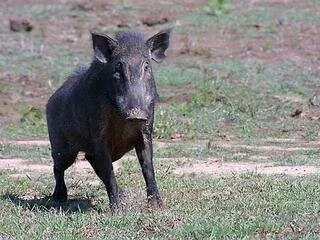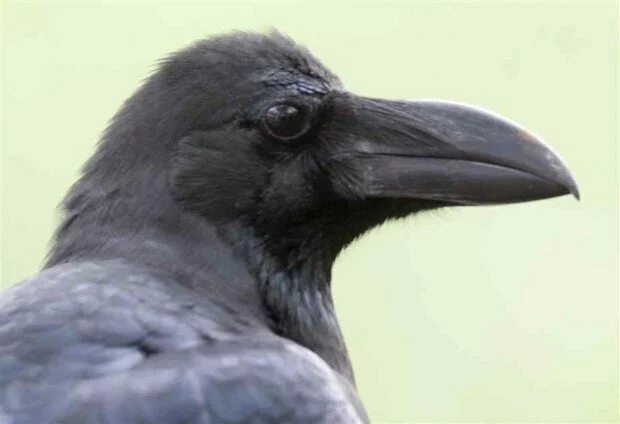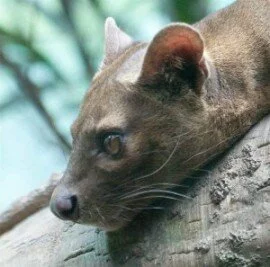The Swine Invasion: The Effects of Feral Hogs on Foreign Ecosystems
Domestic pigs (Sus scrofa domesticus) have long been one of the most important agricultural animals in human history. As one of the most prominent food sources for man, domestic pigs were introduced into new lands by explorers who wished to keep a supply of meat with them at all times. Such was the case with Spanish explorer Hernando de Soto (and later explorers), who brought swine with him to the United States in 1539 as a live food source for him and his troops. However, the apparently safe practice of introducing the domestic pig to new lands would one day lead to an unexpected worriment. As some swine escaped captivity, they were exposed to a new ecosystem ripe with everything they needed to survive. Adapting to their new habitat, the animals became feral (that is to say, wild again), changing over time to resemble their wild boar ancestors (Sus scrofa) and multiplying as they would in captivity or in their original range. About four centuries later, another pig was introduced into the United States for the purposes of food and sport, the Eurasian wild boar. This creature, too, successfully adapted to its new habitat and its numbers began to spread throughout the United States. The invasive swine would soon begin to create a disturbance in the environment as they damaged pastures and rooted up plants in their search for food. Eventually, the destructive animals managed to interbreed, and more would soon begin to spread throughout the lands.[1] Large, powerful, and dangerous, these feral hogs (also known as wild hogs and feral/wild pigs) would become among the most destructive of invasive species. Possessing few predators, the hog populations would continue to multiply unhindered and threaten the surrounding environment. The hogs would eventually come to threaten the crops of humans and spread diseases as they travel.[2] Now, the descendants of these creatures have become a seemingly unstoppable force, with humans unable to control the population numbers of this once domesticated beast. To this day, the battle against the dangerous feral hog continues, as man attempts to bring an end to this invasive threat.
These wild pigs can reach impressive sizes, with body lengths ranging from 3.6 feet to 4.9 feet and heights of up to 3 feet at the shoulders. They can also reach weights of up to 400 lbs.[3] One impressive Georgia hog shot in 2004, known to locals as “Hogzilla,” is estimated by scientists to have reached 7.5-8 feet in length and up to 800 lbs, proving that these animals can also reach massive proportions.[4] However, the average wild hog can be similar to the domestic pig. There are noticeable differences, though, such as the wild variety’s thinner body, coarser hair, and possession of long canine teeth known as tusks.[5] Older feral hogs can also develop a thick keratinous shield over their shoulders, a trait which provides protection during battles with other boars. The coarser hair of the wild animals can also form in a tuft along the hog’s back, earning them the common name “razorbacks.” Furthermore, the tails of wild pigs are not curly such as in their domestic relatives, but lengthy and straight with a bushy tip.[6]
The wild boar’s range and population sizes have been greatly altered throughout history. Apart from their introduction into other countries, their numbers were also affected in their original ranges of Europe, Asia, and North Africa.[7] Over many years, the wild boar became locally extinct throughout its range due to excessive hunting. It is thought the boar population in Great Britain became extinct in the 13th century, while the Denmark’s last boar was shot early in the 19th century. By 1900, the species was absent in Tunisia and Sudan and large areas of Germany, Austria, and Italy. Russia’s wild boar became extinct in wide areas by the 1930’s. However, a great revival of the species began in the mid 1900’s. By 1950, the boars reached their original northern boundary throughout much of their Asiatic range. By 1960, the boar populations reached into Saint Petersburg and Moscow, and by 1975, wild boars were also found in Archangelsk and Astrakhan. In the 1970’s, the boars were once again present in Denmark and Sweden as the result of a population which escaped from captivity. The new wild populations managed to migrate to Tuscany and Italy by during the 1990’s. During this time, the wild boar became re-established in England after another group of boar escaped from specialized farms and survived to reproduce in the wild. This revival, along with the introductions of both domesticated pigs and their wild boar ancestors not only to North America but also South America, New Zealand, and Australia, resulted in a new massive distribution of wild boars throughout the world.[8]
Feral hogs are tough and adaptable creatures which can survive in a variety of different habitats, including agricultural areas, coastlands, natural and planted forests, grasslands, riparian zones, scrublands, urban areas, and wetlands. They have even adapted to semi-arid rangelands in Australia and 3000-meter altitudes in New Guinea. The densities of local populations are affected by environmental factors such as the seasons and food and water availability. For instance, during the dry season in Santa Catalina, pigs preferred the cool moist canyon bottoms as a result of a physiological need for water. Afterwards, the animals would seek dense vegetation more actively than open areas such as grasslands. Areas with crops will attract great numbers of feral pigs. In fact, the number of these animals in a certain area has been known to increase four-fold due to the presence of crops. A recent expansion of feral pigs in Australia was also due to the sudden availability of water from farm dams and developing forest industries.[9]
The effects of feral hogs on ecosystems can be devastating. Since they are omnivores, there is a high potential for interspecific competition between feral hogs and several animals located within their large range which share some of the hogs’ food interests or needs. There may also be competition with other animals for water or space as the hog numbers begin to grow out of control. Studies have revealed a great potential for competition with animals such as deer, javelina (also known as collared peccary), turkey, waterfowls, squirrels, chipmunks, raccoons, and even large omnivores such as bears. Animal matter makes up a small component of the feral hog’s diet, though there is disagreement over whether it is the result of scavenging or actual predation. However, there has been documentation of hogs preying on young lambs. Furthermore, the presence of lizards, mice, birds, juvenile pigs, and even deer remains have been observed inside of hogs in the Engling WMA. Cannibalism among the hogs has also been observed on some occasions. The gluttonous hogs have also been known to prey on turkey nests, though the future impact of this behavior is not thought to be noticeable since the hogs merely drive away the local nest predators in those areas and as such are not adding further stress to turkey population numbers. Despite this, there is nest predation which can endanger the future of some animals; in Georgia, it was discovered that 80 percent of sea turtle nests were once lost to hog predation. With all of these observations in mind, it is clear that the presence of feral hogs may begin to threaten the future of several species residing within their ever-increasing range.[10]
These troublesome invaders are well known for their damage to vegetation. Not only do they consume vegetation, but they may also indirectly impact local plant life by rooting and digging in search of other edible material. In the Smokey Mountains, up to 50 non-woody species are known to be eaten, uprooted, or trampled by hogs and in Hawaii, where bats are the only native mammals, feral hogs have become dangerous for plants that are not adapted to the pressures of herbivorous creatures. Although in some areas vegetation production is stimulated by the pressure from hog activities, the plant life in other areas of the feral pig range is also suffering due to the presence of the invading animals. As a result, the feral hog’s impact on local plant life has provided mixed results.[11]
Rooting and wallowing has also contributed to soil erosion and the reduction in water quality, which can eventually threaten the health of other species sharing the environment or create thousands of dollars in damage to crops. Feral hogs are also known to carry diseases, possibly their most dangerous trait. They have been known to carry diseases such as swine brucellosis, pseudo-rabies, trichinosis, and leptospirosis.[12] However, these are not the only diseases the animals carry. Tyler Campbell, research biologist at the National Wildlife Research Center’s field station in Kingsville, Texas, states that feral pigs can harbor more than 30 different diseases. This is especially alarming considering the wild swine often come within close proximity to domestic swine facilities and their domesticated relatives.[13] Domesticated swine have often contracted the pseudo-rabies disease from feral hogs. This disease is not related to rabies, but is actually caused by a herpes virus. Though it does not infect people, it weakens pigs and can cause abortions and stillbirths while rendering the infected pigs susceptible to other problems. There is no treatment for this disease, and infected pigs carry it as long as they live. The disease can even be transmitted to cattle, sheep, goats, dogs, and cats (where it is fatal). Though the chances of this taking place can be lessened by preventing sows from contact with wild boars, feral pigs have actually been known to break into commercial hog operations to reach sows that are in heat. Up to six commercial operations are hindered by diseases such as pseudo-rabies every year.[14]
Hogs can also directly threaten humans. Sows with piglets have been known to become very aggressive to nearby humans. Believing that their offspring are in danger of attacks from people, mother hogs have no qualms with charging at a person who strays too close. These attacks can be lethal, as hogs are not only large and powerful, but also possess tusks which they use to gore their enemies. Although most attacks are from females guarding their offspring, almost any encounter with a wild boar can lead to an unexpected attack.[15]
So how can these invasive hogs be stopped? Such a task has proven to be more difficult than some expected. This is partly due to the fact that feral hogs are prolific breeders. Female feral pigs can begin breeding between 6-10 months of age, though this can depend on the availability of food. Young sows begin producing only small litters, but older females can produce 10-13 piglets in a single litter. Even then, these hogs can do this twice every 12-15 months. Although drought and other less favorable conditions can reduce litter size, frequency of litters, and piglet survival, it is possible for a hog population to double in just four months given the right conditions.[16] This amazing reproductive ability makes it easy for feral hog numbers to rebound even when under pressure from hunting. Furthermore, many populations are small and isolated, making it difficult to locate them. However, concentrated shooting and trapping efforts by state and federal employees, private landowners, and recreational hunters have actually brought some success.[17] If this continuous hunting continues, it is possible for feral hog populations to be controlled until more efficient methods of killing them are discovered.
The feral hog is certainly an unusual invasive species. Its ancestors were mainly domesticated animals which people relied on for food and sport, and its introduction into areas outside their range actually began centuries ago. However, its effects on the environment are no different from other invasive animals. Difficult to manage and dangerous to the environment for a variety of reasons, the feral hog may soon become one of the greatest dangers to the ecosystems throughout its new range. It is yet another example of how introducing an animal to a foreign ecosystem without considering the results can lead to disastrous outcomes.
[1] “Wild Pigs in U.S. Spreading Disease, Ruining Property, Experts Say.” www.news.nationalgeographic.com. Available from http://news.nationalgeographic.com/news/2006/11/061122-wild-pigs_2.html. Internet; accessed 13 July 2011.
[2] “Shoot Feral Hogs on Sight.” www.mdc.mo.gov. Available from http://mdc.mo.gov/landwater-care/invasive-species/invasive-animal-management/feral-hog-control/shoot-feral-hogs-sight. Internet; accessed 14 July 2011.
[3] “Wild Pig .” www.dromus.nhm.uga.edu. Available from http://dromus.nhm.uga.edu/~GMNH/gawildlife/index.php?page=speciespages/species_page&key=sscrofa. Internet; accessed 14 July 2011.
[4] “Monster swine ‘Hogzilla’ was real, experts say .” (2005): www.msnbc.msn.com. 22 Mar 2005.
[5] “Wild Pig .” www.dromus.nhm.uga.edu. Available from http://dromus.nhm.uga.edu/~GMNH/gawildlife/index.php?page=speciespages/species_page&key=sscrofa. Internet; accessed 14 July 2011.
[6] “Sus scrofa.” www.discoverlife.org. Available from http://www.discoverlife.org/mp/20q?search=Sus+scrofa&burl=www.invasivespeciesinfo.gov&btxt=InvasiveSpeciesInfo.gov. Internet; accessed 14 July 2011.
[7] “Wild boar.” www.bbc.co.uk. Available from http://www.bbc.co.uk/nature/life/Wild_boar. Internet; accessed 14 July 2011.
[8] “Range of Wild Boars.” www.wild-boar-pig.info. Available from http://wild-boar-pig.info/range.html. Internet; accessed 14 July 2011.
[9] “Sus scrofa.” www.discoverlife.org. Available from http://www.discoverlife.org/mp/20q?search=Sus+scrofa&burl=www.invasivespeciesinfo.gov&btxt=InvasiveSpeciesInfo.gov. Internet; accessed 14 July 2011.
[10] Synatszke, David . “The Ecological Impacts of Feral Swine.” www.agrilife.org. Available from http://agrilife.org/texnatwildlife/feral-hogs/the-ecological-impacts-of-feral-swine/. Internet; accessed 14 July 2011.
[11] Ibid
[12] “Shoot Feral Hogs on Sight.” www.mdc.mo.gov. Available from http://mdc.mo.gov/landwater-care/invasive-species/invasive-animal-management/feral-hog-control/shoot-feral-hogs-sight. Internet; accessed 14 July 2011.
[13] “Wild Pigs in U.S. Spreading Disease, Ruining Property, Experts Say.” www.news.nationalgeographic.com. Available from http://news.nationalgeographic.com/news/2006/11/061122-wild-pigs_2.html. Internet; accessed 13 July 2011.
[14] “Feral Hogs Threaten People, Farms and Wildlife.” www.mdc.mo.gov. Available from http://mdc.mo.gov/landwater-care/animal-management/invasive-animal-management/feral-hogs/feral-hogs-threat-people-agri. Internet; accessed 14 July 2011.
[15] Ibid
[16] “Feral Hogs.” www.ci.austin.tx.us. Available from http://www.ci.austin.tx.us/water/wildland/feralhogs.htm. Internet; accessed 14 July 2011.
[17] “Shoot Feral Hogs on Sight.” www.mdc.mo.gov. Available from http://mdc.mo.gov/landwater-care/invasive-species/invasive-animal-management/feral-hog-control/shoot-feral-hogs-sight. Internet; accessed 14 July 2011.


